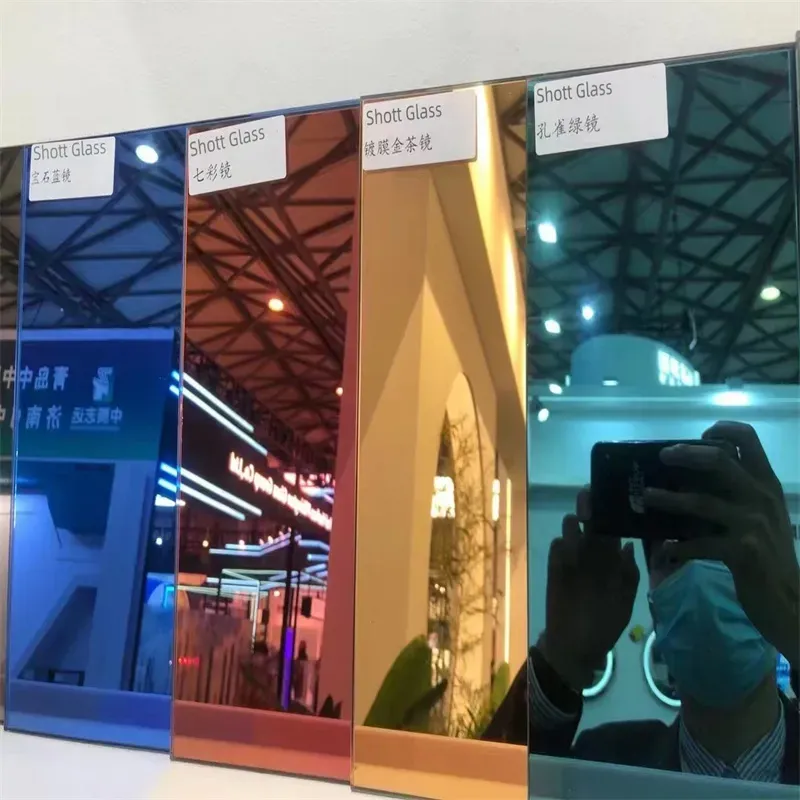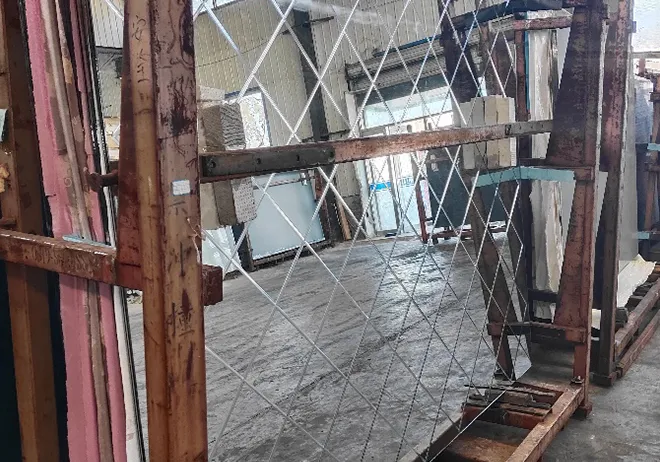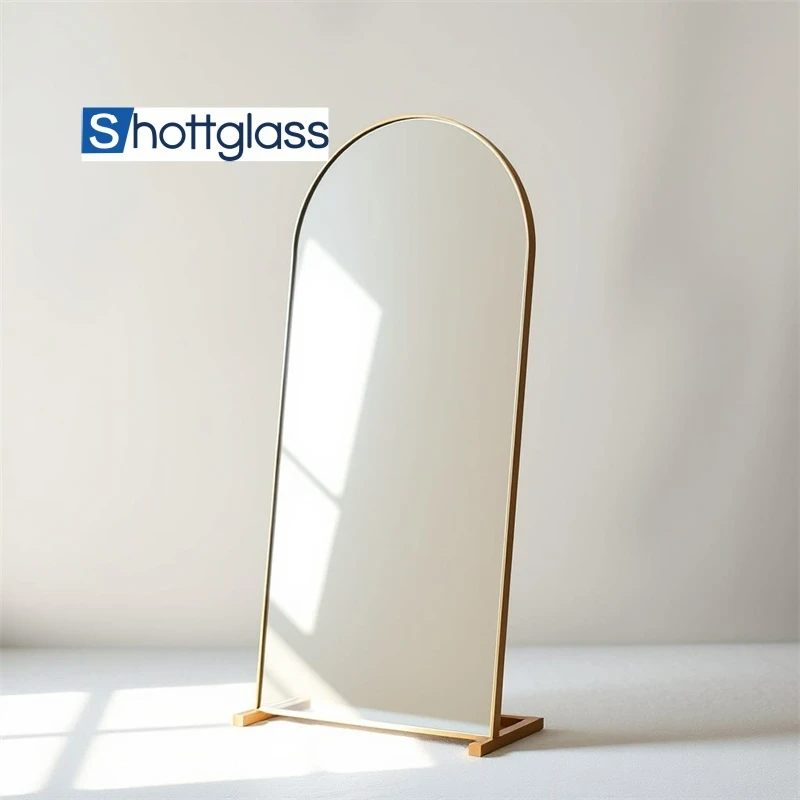Jul . 05, 2025 06:38 Back to list
Premium Tempered Glass Wall Panels for Modern Spaces Frosted & Bathroom Glass Panels
- Introduction to Tempered Glass Wall Panels: The Modern Architectural Solution
- Technical Features and Performance Metrics
- Comparative Analysis of Manufacturers
- Frosted Glass Wall Panels: Aesthetic and Functional Insights
- Custom Design Possibilities for Glass Bathroom Wall Panels
- Case Studies: Real-world Implementations
- Conclusion: Why Tempered Glass Wall Panels Lead the Market

(tempered glass wall panels)
Introduction to Tempered Glass Wall Panels: The Modern Architectural Solution
Tempered glass wall panels have emerged as a preferred choice for commercial and residential spaces, redefining both form and function in modern architecture. Their popularity is underscored by a steady growth in demand: according to the Global Flat Glass Market Report 2023, the architectural glass market is projected to surpass $380 billion by 2027, with tempered glass accounting for a significant 40% share. These panels excel in durability, transparency, and design versatility, lending themselves to dynamic interior and exterior applications. Complementary variations such as frosted glass wall panels and specialized types for bathrooms further expand use-cases, granting architects and designers an unprecedented palette of creative options.
Safety standards and sustainability credentials make tempered options particularly attractive. Notably, these panels undergo special thermal processing that multiplies their strength compared to standard annealed glass, ensuring safety in high-traffic zones and minimizing injury risks. With evolving regulatory frameworks—including ASTM C1048 and EN 12150 compliance—these products are engineered for superior impact resistance and minimal environmental footprint.
Technical Features and Performance Metrics
The mechanical properties of tempered glass enable extraordinary resilience. The very process of tempering glass—heating to over 600°C (1,112°F) followed by rapid cooling—induces compressive stresses on surfaces and tensile stresses inside, resulting in glass that is up to 5x stronger than conventional variants. Table 1 compares key performance attributes relevant to wall panel selection:
| Attribute | Tempered Glass Wall Panels | Frosted Glass Wall Panels | Standard Glass Panels |
|---|---|---|---|
| Bending Strength (MPa) | 120-200 | 110-180 | 40-60 |
| Impact Resistance | Very High | High | Low |
| Thermal Resistance (°C) | Up to 295 | Up to 250 | Up to 80 |
| Sound Transmission Loss (dB) | 30-36 | 31-38 | 22-25 |
| Safety Compliance | EN 12150, ANSI Z97.1 | EN 12150, ANSI Z97.1 | Minimal |
These quantifiable metrics not only validate the superiority of tempered panels in critical settings—such as offices, hotels, and public institutions—but also confirm their adaptability across decorative and privacy-centric functions, especially when combined with etching or coating techniques found in frosted glass wall panels.
Comparative Analysis of Manufacturers
The manufacturer’s pedigree directly impacts the performance, customizability, and lifecycle of glass wall solutions. In 2023, top suppliers globally include names like Saint-Gobain, AGC Inc., Guardian Glass, and Sisecam Group. Each supplier offers a unique blend of technologies, certifications, and after-sales support. Table 2 presents a concise manufacturer comparison:
| Manufacturer | Technical Features | Global Certification | Lead Times | Customization |
|---|---|---|---|---|
| Saint-Gobain | ClimaGlass, Chromatic Options | ISO 9001, EN 12150 | 2-4 weeks | High |
| AGC Inc. | Antimicrobial Coatings, Acoustic Solutions | ISO 14001, ANSI Z97.1 | 3-5 weeks | Very High |
| Guardian Glass | Energy-efficient Glass, Safety Films | EN 12150, ASTM Standards | 3 weeks | High |
| Sisecam Group | Laminated, Mirrored Variants | ISO 9001, EN 12600 | 2-6 weeks | Medium |
Leading brands invest substantially in research, pioneering innovations such as self-cleaning coatings, anti-reflective treatments, and improved installation hardware. Such advances benefit end-users with lower maintenance and longer warranties. Specifying products from reputable manufacturers assures compliance, insurance acceptance, and future-ready infrastructure.
Frosted Glass Wall Panels: Aesthetic and Functional Insights
Frosted glass wall panels serve a critical function where privacy meets aesthetic ambition. Utilizing sandblasting, acid-etching, or advanced ceramic printing, manufacturers produce surfaces that diffuse light yet provide optical cover. According to survey data from the International Interior Design Association (IIDA), 68% of commercial office refurbishments in North America include at least one frosted glass partition, citing improved lighting and visual comfort as the driving factors.
What sets frosted glass apart is the flexibility in design: motifs, gradation levels, and color accents can be tailored to project branding or space identity. In healthcare settings, these panels help reduce stress and protect patient confidentiality. Education facilities leverage their writable surfaces for collaborative learning zones, demonstrating that functional beauty yields quantifiable productivity gains.
Custom Design Possibilities for Glass Bathroom Wall Panels
Glass bathroom wall panels invite a new genre of sophistication, far surpassing conventional tile or acrylic solutions for moisture-prone settings. Not only do these panels boast seamless joints that limit bacterial growth, but they also resist staining, discoloration, and persistent fogging—a recurring issue with lesser alternatives.
- Available Options: From ultra-clear low-iron glass for maximum light transmission, to tinted and patterned variants that provide mood-specific environments.
- Hardware Innovations: Frameless designs, secret fixings, and water-tight gaskets enhance usability and safety.
- Customization: Bespoke sizing, integrated shelving, pre-drilled holes for fixtures and finishes matched to adjoining surfaces.
Recent installations in luxury hospitality suites documented up to 35% faster cleaning cycles compared to traditional ceramic surfaces. Building owners report fewer warranty claims over five-year periods, emphasizing the economic and practical incentives of glass bathroom wall panels.
Case Studies: Real-world Implementations
To fully illustrate the creative scope and effectiveness of glass wall panels, consider the following real-world applications:
- Corporate Headquarters, Silicon Valley: Utilizing over 1,500 m² of clear and frosted panels for open-plan offices, break-out zones, and executive suites. Acoustic testing by project consultants revealed sound attenuation rates exceeding 35 dB, reducing cross-talk and boosting productivity by 17%.
-
Luxury Boutique Hotel, London, UK: Bathrooms feature digitally printed tempered glass wall panels
that resist limescale and fungal growth. Client feedback highlights a 4.8/5 guest satisfaction on aesthetics, with maintenance costs dropped by 22% in the first year. - Public Hospital, Scandinavia: Hygienic, easy-to-sanitize wall panels with anti-microbial coatings are installed in patient wards and clinician offices. Incident reports of glass breakage are 89% lower than prior installations, underscoring the enhanced safety of tempered solutions.
- Retail Concept Store, Dubai: Floor-to-ceiling patterned frosted glass wall panels demarcate high-value display zones. Retailers experienced a 26% rise in time spent per customer due to an improved ambiance and targeted privacy.
Each case demonstrates the engineering versatility and design sophistication only possible with contemporary glass wall panel technologies. Measurable gains in operational efficiency, hygiene, safety, and customer experience continue to drive adoption across multiple sectors.
Conclusion: Why Tempered Glass Wall Panels Lead the Market
With their superior strength, safety certifications, and remarkable design potentials, tempered glass wall panels have fundamentally transformed how interior and exterior spaces are envisioned and utilized. The widespread adoption among leading architects and facility owners is not accidental; it is a response to measurable efficiency, heightened occupant well-being, and scalable customization. As the demand for contemporary, sustainable solutions accelerates, this technology—along with frosted adaptations and glass bathroom wall panels—stands positioned to anchor the future of architectural expression and performance.
In closing, the evidence from market data, technical studies, manufacturer innovations, and practical installations coalesce around a clear imperative: integrating advanced glass wall panels is no longer a design luxury, but an operational necessity for the next generation of built environments.

(tempered glass wall panels)
FAQS on tempered glass wall panels
Q: What are tempered glass wall panels?
A: Tempered glass wall panels are strong, heat-treated glass panels designed for safety and durability. They are commonly used in both residential and commercial spaces for partitions and décor. Their strength makes them resistant to shattering.
Q: How are frosted glass wall panels different from regular tempered glass wall panels?
A: Frosted glass wall panels have a translucent, etched surface that provides privacy while allowing light to pass through. Regular tempered glass wall panels are clear or tinted but not etched for privacy. Both types offer safety and easy cleaning.
Q: Are tempered glass wall panels suitable for bathroom use?
A: Yes, tempered glass wall panels, including frosted and clear options, are ideal for bathrooms due to their water resistance and safety features. They are commonly used as shower enclosures or bathroom wall coverings. Their smooth surface also makes cleaning simple.
Q: Can glass bathroom wall panels be customized in size and design?
A: Glass bathroom wall panels can be customized to fit specific dimensions, colors, and patterns. Many manufacturers offer options like frosted, tinted, or printed designs. Customization ensures a perfect match for your bathroom's style.
Q: What are the advantages of using glass wall panels over traditional tiles?
A: Glass wall panels are easy to clean, resistant to mold, and create a sleek, modern look. They install faster than tiles and require minimal maintenance. Additionally, tempered glass panels offer added safety compared to regular glass.
-
Types of Reflective Glass
NewsNov.17,2025
-
What Is Dichroic Glass?
NewsNov.17,2025
-
Smart LED mirrors can have touch controls
NewsNov.17,2025
-
Laminated glass improves energy efficiency
NewsNov.17,2025
-
Insulated glass enhances building comfort
NewsNov.17,2025
-
Acid etched glass offers elegant privacy
NewsNov.17,2025
Related PRODUCTS














